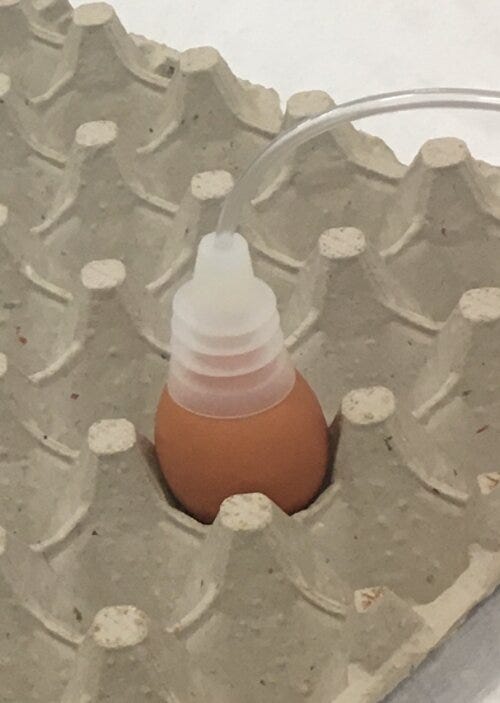Innovative Air-Sniffing Tech to Determine Chicken Egg Sex
Written on
Chapter 1: Understanding the Egg Industry
The egg production sector is notorious for its unethical practices, contributing to the death of approximately 7 billion day-old chicks globally, often through suffocation or maceration due to the industry's disregard for them. This is particularly concerning as it highlights the cruelty embedded in our food systems.

Shortly after hatching, male chicks and unhealthy female chicks are deemed unnecessary and are exterminated in horrendous ways. This includes both free-range and battery-cage systems, indicating that the issue spans across different types of egg production. Moreover, the foie gras industry also employs similar methods to cull female ducklings and goslings that do not meet weight expectations.
There are ongoing efforts to find more humane and efficient ways to determine the sex of eggs early in incubation. This advancement aims to enhance animal welfare, minimize food waste, lessen environmental impact, and cut costs associated with employing human sexers and incubating male eggs. Some European nations are already moving towards banning the culling of male chicks.
Section 1.1: Innovative Methods for Sex Identification
Researchers have been exploring various experimental techniques to ascertain a chick's sex shortly after an egg is laid. These methods include sampling through tiny holes in the eggshell and using imaging technology, although some approaches have been reported as impractical for immediate use.
A promising new technique has emerged from a collaboration between the University of California Davis and SENSit Ventures Inc., a startup in Davis. This method allows for sex identification at 8 to 10 days of incubation by analyzing volatile organic compounds that escape through the eggshell.

To achieve this, the research team adapted suction cups that are typically employed for mass egg handling to "sniff" the gases released by the eggs without breaking them open. These air samples were then analyzed using gas chromatography/mass spectrometry, with confirmation of sex derived from DNA analysis conducted by Huajin Zhou, an expert in immunogenetics.
Section 1.2: The Sniffing Technology Explained
Tom Turpen, the CEO of Sensit Ventures, stated, "We discovered that volatile chemicals emitted from the eggs can be captured and statistically analyzed." Their findings revealed that embryos could be accurately classified by sex with 80% accuracy after just two minutes of sampling at 8 days of incubation.
The research team believes that by enhancing the suction-cup technology, they could test multiple eggs simultaneously, optimizing the process for hatcheries.
This innovation demonstrates the feasibility of sorting eggs by sex during early incubation based on detected volatile organic compounds. This raises an intriguing question: could scent-driven mammals like dogs or rats also discern the sex of developing chicken embryos at this stage?
Chapter 2: Future Applications and Implications
The team envisions this technology being incorporated into hatcheries, as noted by Mr. Turpen. Developed under the guidance of Cristina Davis, a professor of aerospace and mechanical engineering, this technology utilizes over two decades of experience in mechanical design and chemical sensor systems.
"Professor Davis is an extraordinary innovator," remarked Dushyant Pathak, associate vice chancellor of Technology Management and Corporate Relations at UC Davis. The combination of her inventive spirit with the business acumen of SENSit’s founding team is seen as vital for translating this groundbreaking research into practical applications.
This technology has potential applications beyond determining sex in chicken embryos. It is compact, cost-effective, and capable of detecting molecules in extremely low concentrations while operating on standard batteries.
"We see substantial opportunities for applying this technology across various sectors including defense, agriculture, process engineering, and healthcare," Mr. Turpen emphasized.
SensIT Ventures Inc. was established in 2015 and is based in Davis, California, utilizing proprietary technology to create custom chemical sensors that provide valuable solutions across multiple industries.
The first video titled "A detached air cell in a chicken egg: how to identify during incubation" explains the identification process of air cells in chicken eggs, which is crucial for successful incubation.
The second video, "Testing if Sharks Can Smell a Drop of Blood," explores how sharks detect scents, drawing parallels to the research on detecting volatile chemicals in eggs.